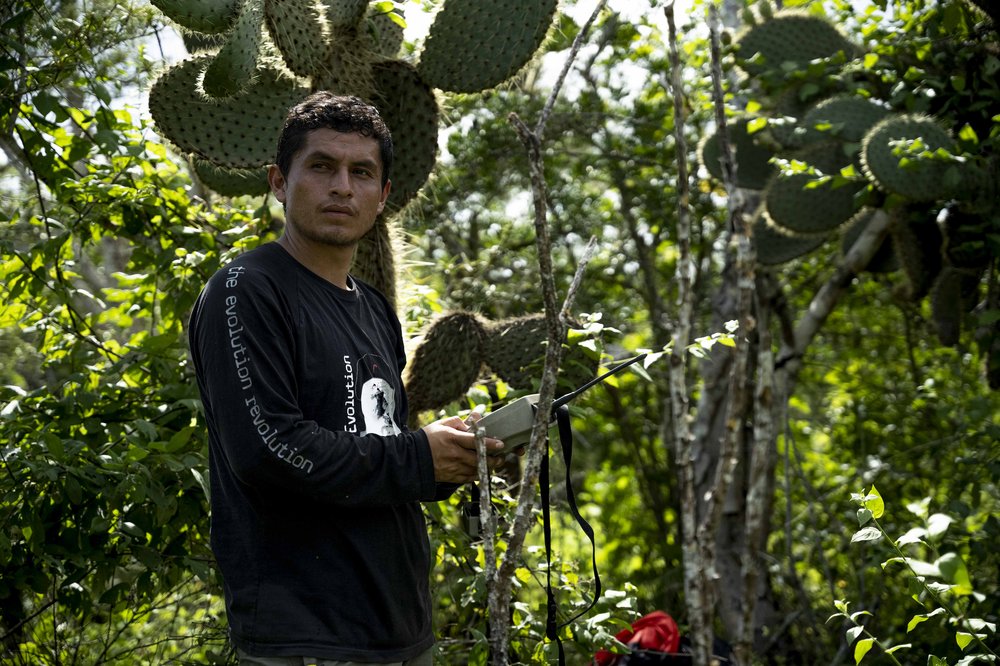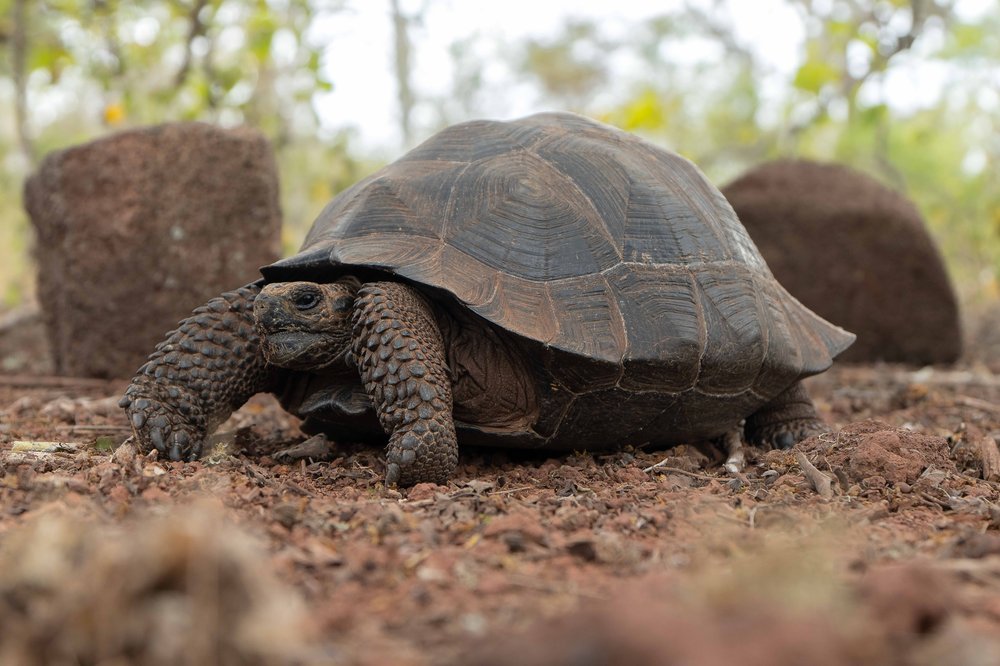Cristian Peñafiel, our field assistant for the giant tortoise conservation program, was interviewed by our donor, Galapagos Conservation Trust, to share his experience studying these iconic animals.
Can you give us a brief description of the Galapagos Tortoise Movement Ecology Programme and what it hopes to achieve?
The goal of the Galapagos Tortoise Movement Ecology Programme is to use applied science to generate robust data to inform the Galapagos National Park Directorate and other local authorities about the ecology and health of Galapagos tortoises in response to anthropogenic changes such as invasive species, urbanisation and climate change. This data can be used to inform conservation strategies for the most famous residents of the Galapagos Islands.
What are some of the methods you use to study the movement and migration of giant tortoises and why is it important to collect this data?
When the hatchlings first appear out of the nest, we identify individuals who are the most capable of carrying a radio transmitter that monitors the hatchlings through a process called telemetry. Telemetry is the automatic collection and transmission of data from remote sources, which, for us, is the location of hatchlings that carry a transmitter.
For adult tortoises, there are several methods for tracking their movements, including telemetry using GPS and satellite GPS.
The data shows us our tagged tortoise’s route during the migration. Some individuals’ migration routes change annually, often occurring when the tortoise cannot return to the nesting site where they were first tagged. This is why it is essential to monitor the tortoises regularly.


Having spent a lot of time studying tortoises, have you observed any interesting or unique behaviours that you would like to focus your future research on?
During the short time I have been involved in the programme, I have observed many different behaviours in adult and juvenile giant tortoises.
Many of the adult tortoises I have observed across the different islands are almost always alone. On Española, the tortoises experience a lot of stress when humans are close by, with their first instinct being to flee.
On the Alcedo volcano on Isabela, the tortoises do not appear to be stressed in the presence of humans, with many continuing their migration unfazed by their presence. Whereas on Santa Cruz, the tortoises only display signs of stress while we are conducting health checks, which is why we make this process as quick and minimally invasive as possible.
I have also observed interesting behaviours in juvenile tortoises. Some are very territorial, so you will often repeatedly find them in the same place. Others prefer to explore their surroundings and are found in different locations repeatedly.
In terms of my future research, there are still many questions I want to try and answer, including at what age do giant tortoises start to migrate, why do tortoises display different behaviours on different islands, and at what age do tortoises stop reproducing?
What are some of the challenges you face when conducting fieldwork?
Every day is a new challenge, with the weather being one of the most difficult. You never know if it will be a rainy, sunny or shady day.
When it rains, you can’t do telemetry properly; you must wait for the rain to pass or the day ends. You can do your work when it is sunny, but the scorching sun means we have to take frequent breaks. Shady days are perfect, as you have a long day in the field collecting data!

What do you find most rewarding about working in the field?
Every day, you see something new. The natural world is constantly changing, leading to new discoveries.
Each tortoise has a different story to tell. I have come across giant tortoises with shell malformations, bumps and scars, which make you think about the challenges they have had to face.
The most rewarding thing is being surrounded by nature, the sound of the birds, the tranquillity, the silence, the wind, the sun, the rain and the satisfaction that comes from spending hours of the day walking alongside wildlife.
What advice would you give someone just starting their career in research and conservation?
My best advice is to be dedicated to what you do, never stop, and never settle until the good is better and the best is excellent. Spend time discovering what you are passionate about, and soon, you will learn more every day. Perseverance and dedication will help you grow professionally and open new and exciting opportunities.


What are your favourite terrestrial and marine species in Galapagos and why?
My favourite terrestrial species must be the giant tortoise, particularly hatchlings. I enjoy watching them grow and develop month by month, imagining that at some point in their life, they will begin their migration journey. From day one, they are in survival mode as they try to escape from the nest; it is incredible how such a tiny hatchling will grow up to become one of the largest tortoises in the world.
Galapagos penguins are my favourite marine species. I find it fascinating how a species typically found in cold climates has adapted to the warmth of Galapagos. They are always diving and searching for fish in pairs, and when it is very sunny, they hunch forward to provide shade for their legs!





